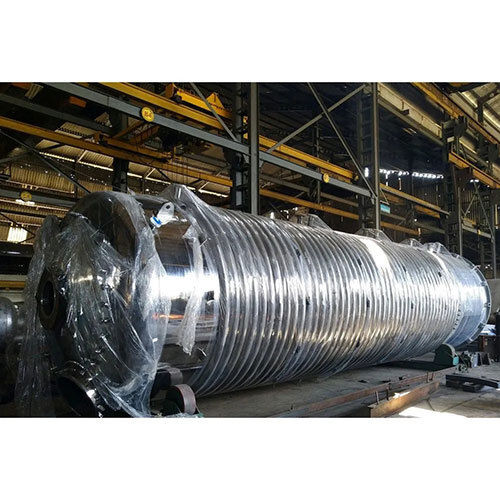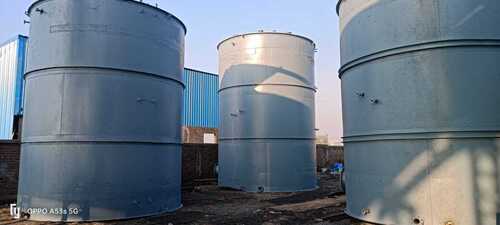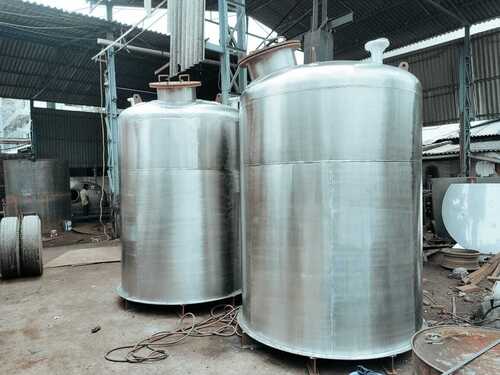Industrial Storage Tanks
800000 INR/Unit
Product Details:
X
Industrial Storage Tanks Price And Quantity
- 800000 INR/Unit
- 10 Unit
Industrial Storage Tanks Trade Information
- hajira,porbandar
- 100 Unit Per Month
- 10 Days
- as per product
- All India
Product Description
Industrial storage tanks are large containers used for storing liquids gases or granular substances in various industrial sectors These tanks are essential for safe storage handling and transportation of materials critical to industrial processes Heres an overview of industrial storage tanks including their types materials applications and considerations
Types of Industrial Storage Tanks
1 AboveGround Tanks
Description These tanks are located above ground level and are typically used for storing liquids such as water chemicals fuels gasoline diesel and industrial oils
Materials Common materials include carbon steel stainless steel fiberglass reinforced plastic FRP and polyethylene PE
Applications Widely used in industries such as chemical manufacturing oil and gas water treatment and agriculture
2 Underground Tanks
Description Buried underground for storage of substances such as petroleum products eg gasoline diesel hazardous chemicals and wastewater
Materials Materials used for underground tanks include fiberglass coated steel and concrete
Applications Commonly found in gas stations industrial facilities and municipal infrastructure for fuel storage and wastewater management
3 Pressure Vessels
Description Designed to store substances under pressure including compressed gases eg propane oxygen and liquids that require containment at higher than atmospheric pressure
Materials Typically constructed from steel stainless steel or other highstrength alloys
Applications Used in industries such as chemical processing pharmaceuticals and energy production for storing and transporting pressurized fluids and gases
4 Silos
Description Tall cylindrical towers or bins used for storing bulk materials such as grains cement coal and aggregates
Materials Steel is commonly used due to its strength and durability
Applications Found in industries such as agriculture construction and manufacturing for bulk material storage and distribution
Materials of Construction
1 Steel
Advantages Strong durable and suitable for a wide range of substances Can be coated or lined for corrosion resistance
Applications Suitable for aboveground and underground tanks in various industrial applications
2 Fiberglass Reinforced Plastic FRP
Advantages Lightweight corrosionresistant and suitable for underground and aboveground applications where resistance to chemicals is required
Applications Commonly used in chemical processing water treatment and oil and gas industries
3 Concrete
Advantages Provides excellent strength and durability Suitable for largecapacity tanks and underground installations
Applications Used in water and wastewater treatment as well as in storage of chemicals and petroleum products
4 Polyethylene PE and Polypropylene PP
Advantages Lightweight corrosionresistant and relatively inexpensive Commonly used for smaller tanks or as secondary containment vessels
Applications Often used in chemical storage water treatment and agricultural applications
Applications
1 Chemical Industry Storage of raw materials intermediates and finished products in chemical manufacturing plants
2 Oil and Gas Industry Storage of crude oil refined products and natural gas liquids in refineries terminals and distribution centers
3 Water Treatment Storage of potable water wastewater and chemicals used in water treatment processes
4 Food and Beverage Industry Storage of ingredients additives and finished products in food processing and manufacturing
Considerations and Maintenance
1 Regulatory Compliance Tanks must comply with local state and federal regulations regarding storage of hazardous substances emissions control and spill prevention
2 Safety Features Includes overflow protection leak detection systems secondary containment and corrosion protection measures
3 Maintenance Regular inspection cleaning and maintenance are essential to prevent leaks corrosion and ensure the longevity of the tank
Conclusion
Industrial storage tanks are critical components in various industries providing safe and efficient storage solutions for liquids gases and bulk materials Their design materials of construction and maintenance practices are crucial to ensuring operational safety environmental protection and compliance with regulatory standards
Tell us about your requirement

Price:
Quantity
Select Unit
- 50
- 100
- 200
- 250
- 500
- 1000+
Additional detail
Mobile number
Email





